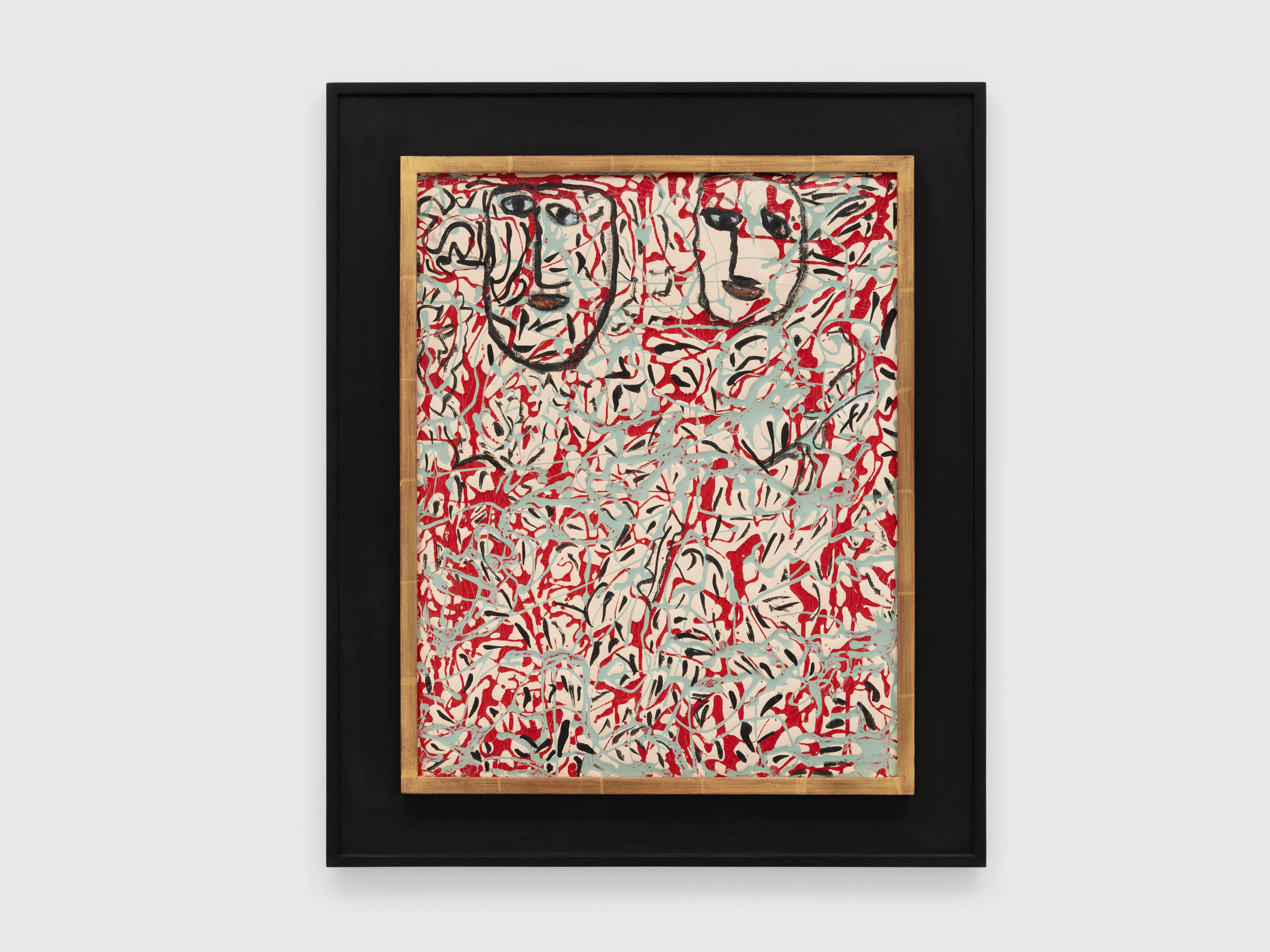-
Janet Sobel
1940s, at the Heart of the New Vanguard
5 October - 3 November 2023
-
 Janet Sobel painting in 1945. Courtesy of Gary Snyder Fine Art MT
Janet Sobel painting in 1945. Courtesy of Gary Snyder Fine Art MT -
Janet Sobel: 1940s, at the Heart of the New Vanguard is the first UK solo exhibition by the Ukrainian-born, New York-based painter Janet Sobel (1893-1968). One of the unsung pioneers of Abstract Expressionism, she enjoyed a short-lived but meteoric career beginning in 1943, when leading New York dealers, collectors and artists took up her work, and culminating in a solo show at Peggy Guggenheim’s Art of This Century gallery in 1946. Nevertheless, she remains largely absent from the narratives of American modernism. As Cecilia Brunson Projects endeavours to showcase artists who have been historically overlooked, we are pleased to share her work at this pivotal moment of re-evaluation, preceding the artist’s 2024 retrospective at the Menil Collection, Houston.
-
 Janet Sobel, Untitled, 1946-48, mixed media on canvas board
Janet Sobel, Untitled, 1946-48, mixed media on canvas board -
Sobel’s story has often been presented as a peculiar footnote to the history of American art. An emigré from Yekaterinoslav (now Dnipro, Ukraine), Sobel turned to painting in her late forties, using materials from her husband’s artificial pearl-making business and painting on her living room floor. Press from the time calls attention to her quirky role in New York’s art scene and there are stories of her cooking soup for Max Ernst and Marcel Duchamp. Then, as quickly as she had appeared on the scene, she put away her paints and moved to Plainfield, New Jersey to continue her life as a housewife. It is a narrative that revels in eccentricities and somewhat belies Sobel’s centrality and impact in New York’s art world in the 1940s.
-
-
We are pleased to present works from throughout the 1940s, which reflect Sobel’s stylistic breadth in a decade that saw abstraction and figuration set against each other. Her unaffected approach to painting, fuelled only by a personal urge to create, adhered to the artistic currents of the time, when Surrealists sought to detach from their academic teachings and work from a point of pure intuition. Her rapid execution and automatic techniques are demonstrated in two important examples of her ‘all-over’ drip paintings, a style synonymous with the new wave of abstraction developed in post-war New York. In 1961, critic Clement Greenberg retrospectively wrote that he and Jackson Pollock had admired her all-over paintings in 1944 prior to Pollock’s own experiments in this style, a reality that disrupts the notion of a homegrown American modernism.
-
 Janet Sobel, Untitled, c. 1942, gouache on paper mounted on board
Janet Sobel, Untitled, c. 1942, gouache on paper mounted on board -
It is clear how her personal circumstances as a middle-aged, uneducated woman, a housewife, and a Jewish immigrant from Eastern Europe have contributed to her work being coloured as ‘primitive’ or ‘outsider.’ Though it is correct that she had no formal artistic training, the term ‘outsider’ is as unsuitable as it would be for artists she showed alongside in 1945 at Peggy Guggenheim’s gallery, such as Frida Kahlo, Lee Krasner and Leonora Carrington. Her work was illustrated alongside that of Mark Rothko, Jackson Pollock and Arshile Gorky in collector Sidney Janis’ 1944 volume Abstract and Surrealist Art in America.
-
The exhibition also includes a selection of her lesser-known figurative paintings, recently exhibited at New York’s Ukrainian Museum. They combine the weightless figures and dreamlike compositions of contemporaries such as Marc Chagall with elements of the folk art and iconography of her native Ukraine, reminding us of her past life to which she remained loosely tethered through stories of the war broadcast on radio. In post-war New York, Sobel occupied a liminal space. In her ethereal, often sorrowful figures, detached from any concrete world, we see the desire for a new American modernism and the ache for what was being lost in Europe.



